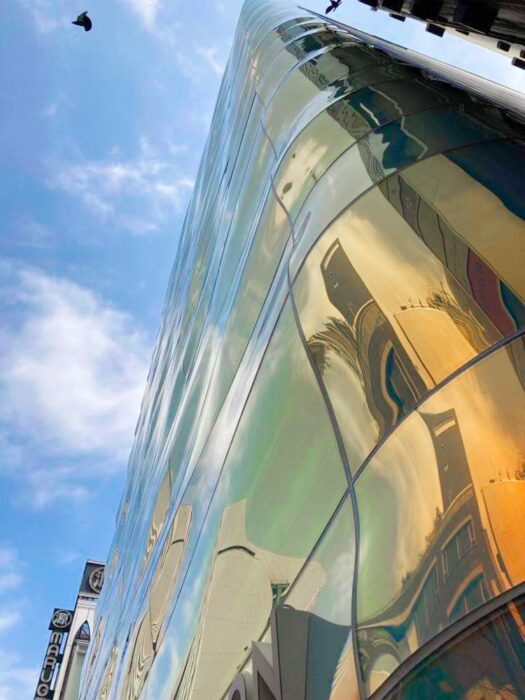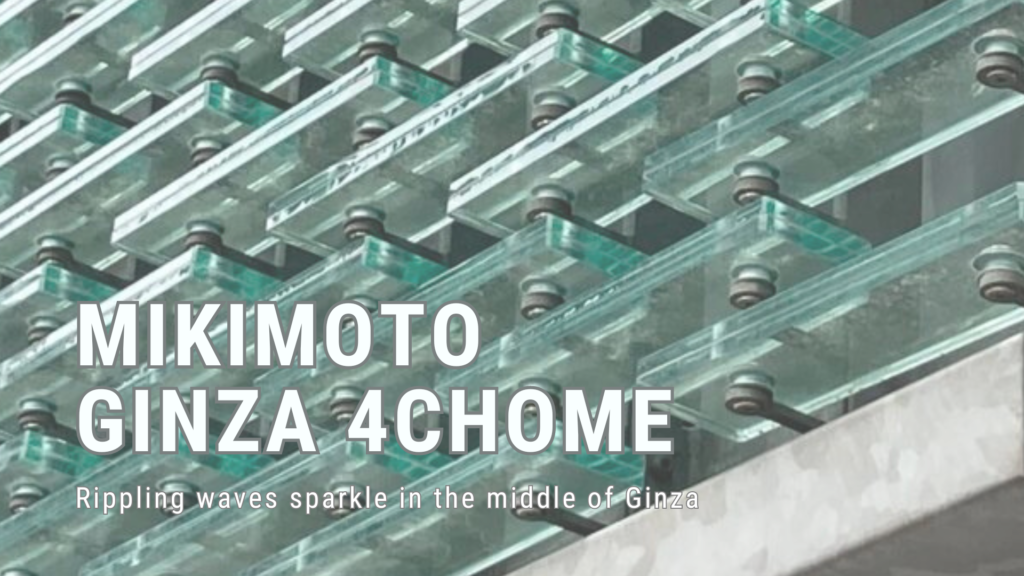Rippling waves sparkle in the middle of Ginza [Part 2]
LOUIS VUITTON GINZA NAMIKI (2022)
AS, Peter Marino Architect
日本語記事はこちら
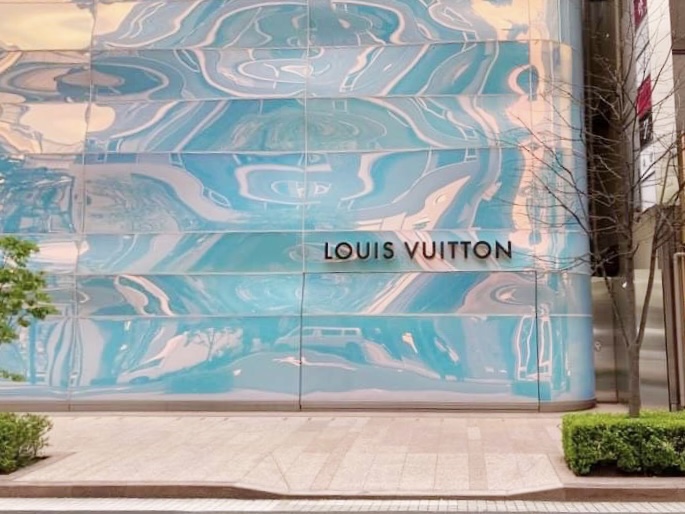

Jun Aoki has designed numerous Louis Vuitton stores both in Japan and internationally.
The store I’ll introduce today marks his twelfth collaboration with Louis Vuitton and his fourth project in Ginza. For each venture, he crafts architecture that resonates with its surroundings.
Let’s explore the latest Louis Vuitton store he has designed in Ginza.
About me
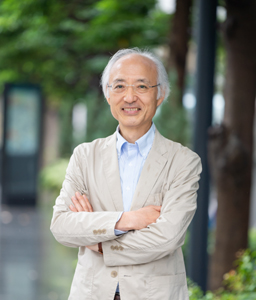
Yasuo Nakamaru
Registered Architect and National Government Licensed Guide Interpreter.
Worked at an architectural firm for 38years and designed domestic works and overseas works in Japan, US, UK, China, etc.
Favorite Buildings: National Gallary of East Wing by I.M.Pei in the US, Kimbell Art Museum by L.Kahn in the US, 21st Century Museum of Contemporary Art by SANAA in Japan
Favorite Things: Playing bass guitar, Jazz Music
Inspired by Impressionism painting
We will explore the newly reconstructed Louis Vuitton store, known as the Ginza Namiki Dori store.
The original building was designed to evoke the brick structures that symbolized Ginza during the Meiji era (1868-1912). The new design draws inspiration from the Edo period (1603-1867), reflecting Ginza’s history as a waterfront area.
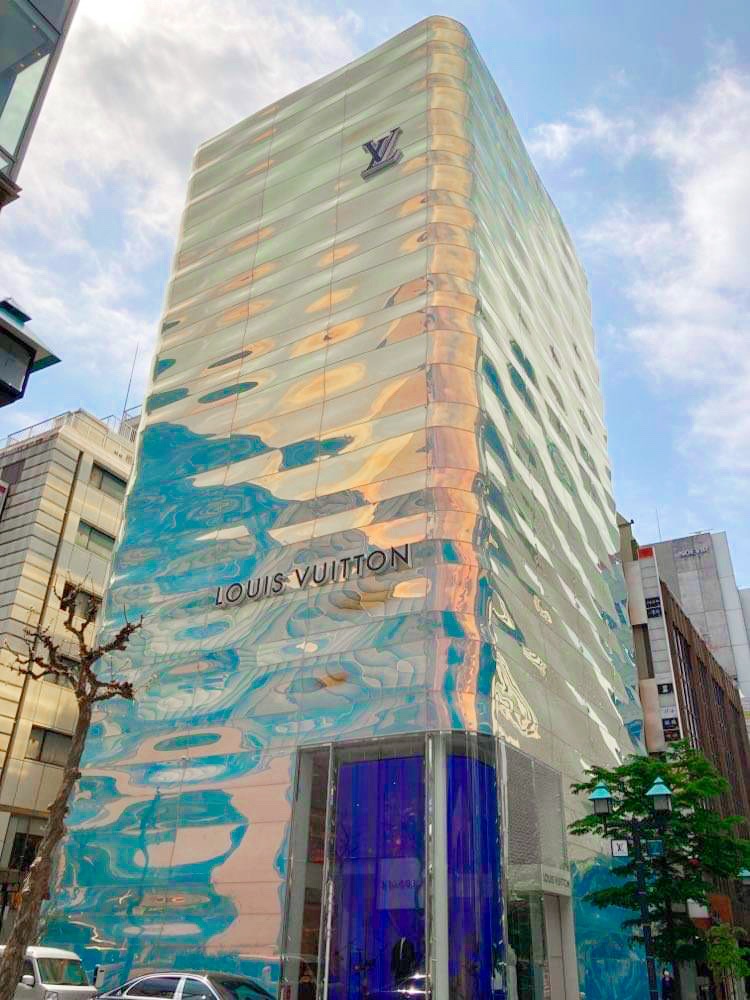
The building’s exterior features a striking image reminiscent of a water pillar, unforgettable once seen.
The inspiration came from the famous Impressionist painting ‘La Grenouillère,’ created by Monet in 1869. The scene depicts a popular bathing spot on the banks of the Seine, located in the suburbs of Paris. This work is celebrated as an epoch-making piece that marked the beginning of Impressionism.

The shimmering water surface in Monet’s painting is depicted through the application of various paint shades directly onto the canvas, a technique that sparked Aoki’s inspiration.
Colors appear mixed not by blending but by strategically placing different hues next to each other. This major characteristic of Impressionist painting, known as ‘divided brushstroke,’ allows for the creation of brighter and more luminous works.
For Impressionist painters, the method of painting was often more significant than the subject matter itself.
How the Water Pillar was created
How did Aoki translate the inspiration he derived from Monet’s painting into his designs?
In his other works, he often incorporates direct representations of his inspirations, such as a stack of suitcases or a sailing boat.
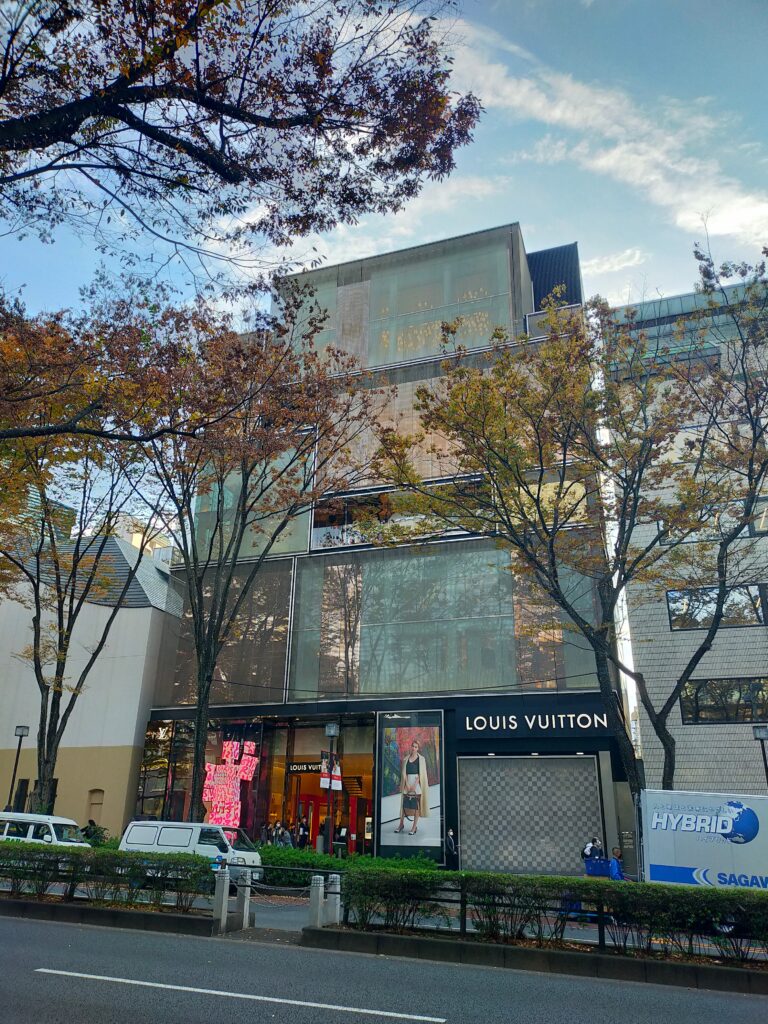
Louis Vuitton Omotesando @haruka.soga
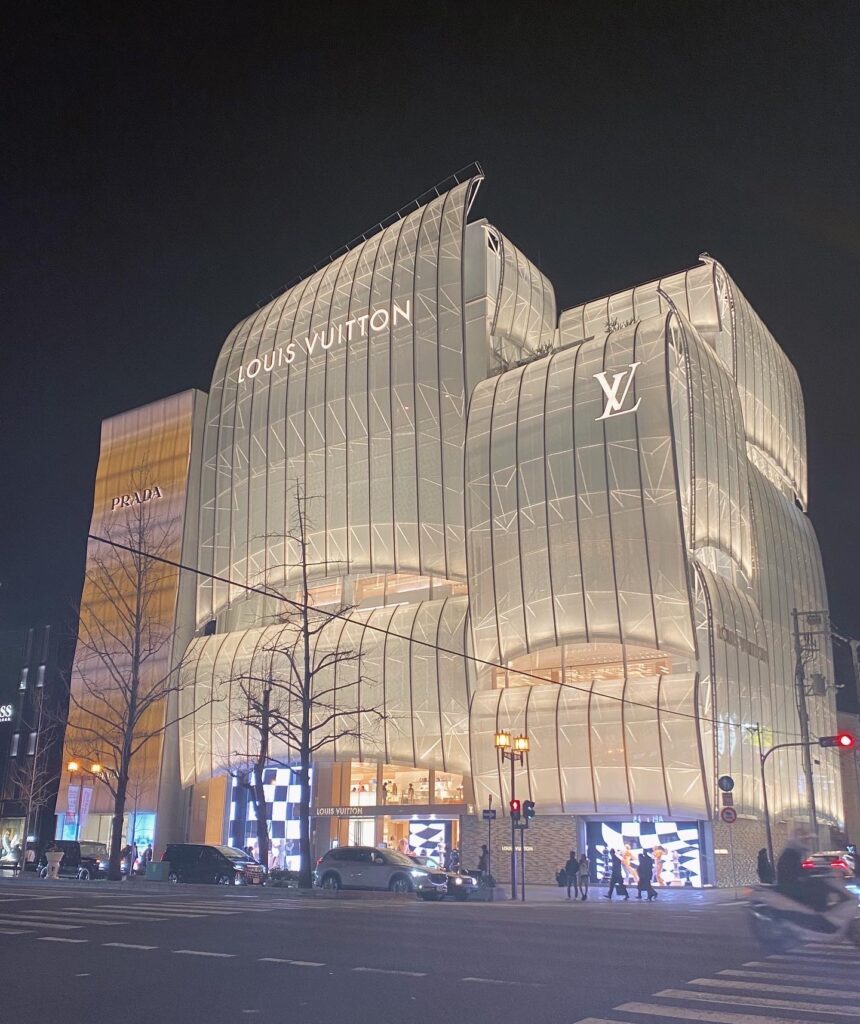
Louis Vuitton Maison Osaka Midosuji
This time, he chose ‘dichroic coating,’ a multi-layer metal film typically used for interior decorations or display materials, rather than traditional building materials. Implementing large-scale dichroic coatings for the first time posed several challenges.
To mimic the shimmering water surface, glass panels were installed on the exterior without metal frames to create a seamless surface. Interior glass panels were also used, covered with a gradation film to produce the effect of narrow oval windows visible from outside. Although the appearance of the glass changes with coatings and films, the glass itself remains colorless.
The effect of water was achieved with curved glass walls, each curved to 50 mm convexity and concavity, totaling 100 mm. These components were manufactured in China, which added layers of complexity in communication, instruction, and inspection during the manufacturing process. Furthermore, the installation took place in Ginza’s cramped conditions, where scaffolding and building proximity presented significant logistical challenges.
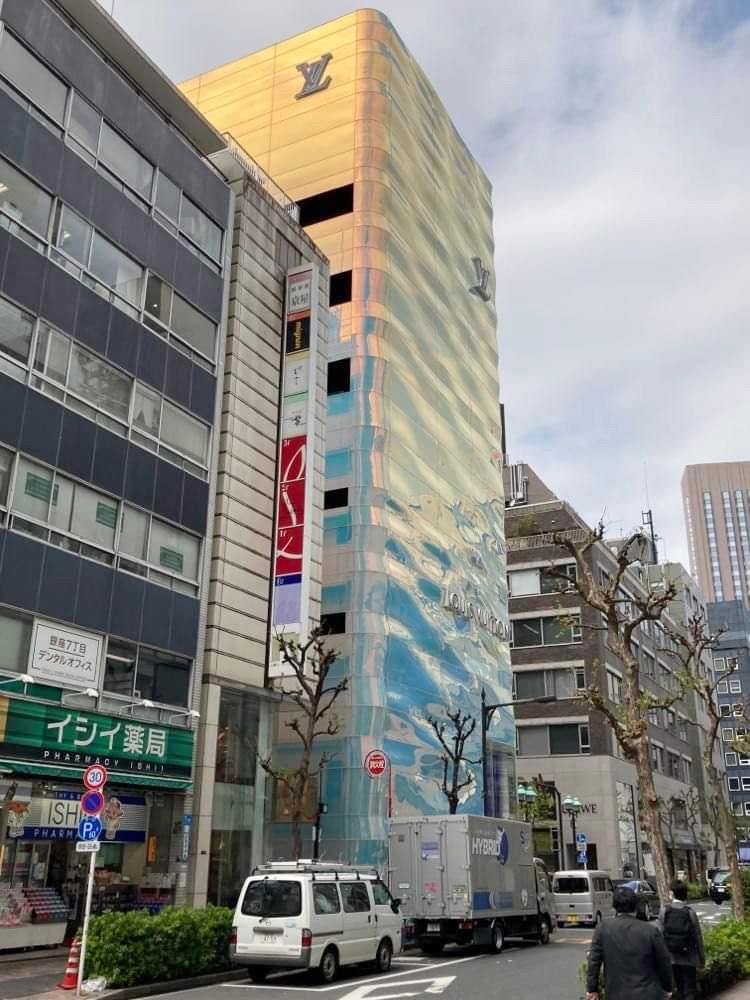
When I visited the other day, the display in the show window across the street coincidentally complemented the exterior wall of the Louis Vuitton store.

There is another La Grenouillere
There is another painting titled ‘La Grenouillère,’ created by another renowned artist. This one is by Renoir, dated 1869.
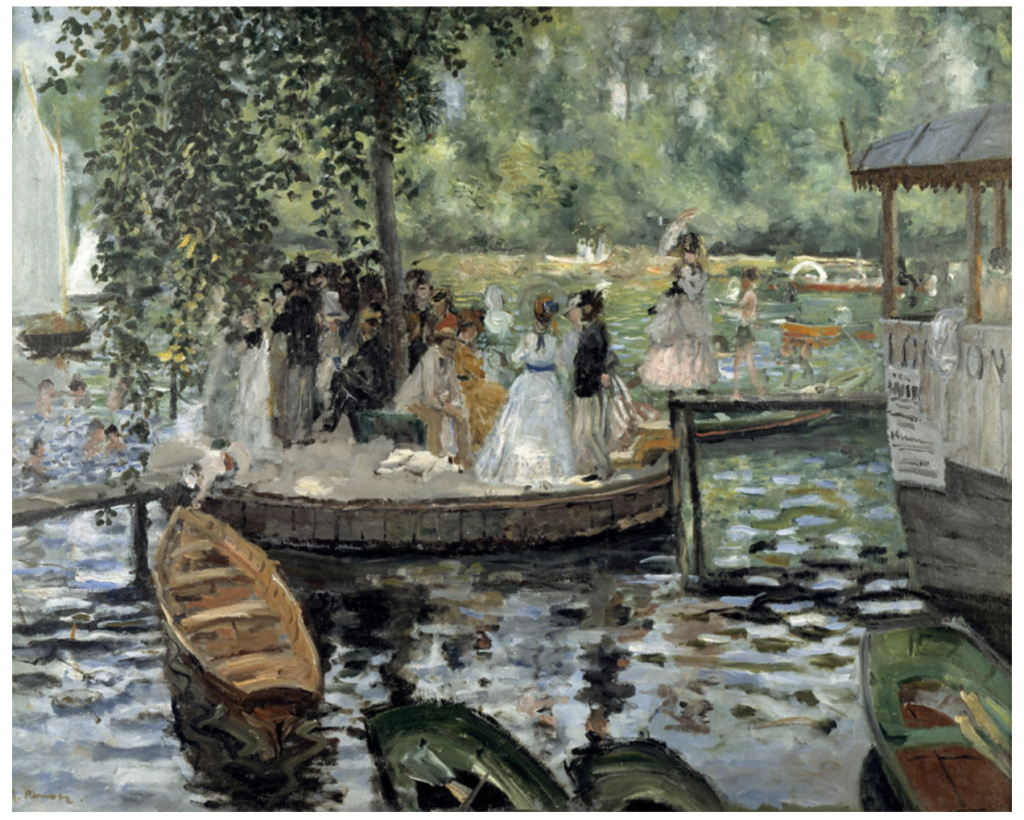
Monet and Renoir, close friends in their youth, once painted side by side along the banks of the Seine while still relatively unknown. Their depictions of the same scene, ‘La Grenouillère,’ differ significantly in style and impression, despite similar viewpoints.
From my perspective, Monet’s rendition captures the water’s surface as swaying and glowing, whereas Renoir emphasizes the sparkle with a more colorful palette.
Considering Aoki drew inspiration from Monet’s version for the Louis Vuitton store, it strikes me that the seascape depicted on the exterior of the Mikimoto Main Store in Ginza by Hiroshi Naito might be influenced by Renoir’s interpretation of ‘La Grenouillère.’
As previously mentioned, Impressionists often employed pointillism, applying paint directly without mixing, to capture the vibrancy of colors. Similarly, Naito’s technique of embedding small glass pieces into the façade mimics this effect, portraying the shimmering water surface with striking clarity.
Looking at buildings appeared in video
Beyond still images, it can be fascinating to explore buildings featured in video clips. As you walk around this Louis Vuitton store, you’ll notice the light reflecting off its curved glass exterior, giving the illusion of a gently swaying water surface.
For Naito’s Mikimoto building, the small glass pieces vividly capture the sparkling and shining water surface, changing moment by moment.
The best time to appreciate the sparkling façade of the Mikimoto building is in midmorning, when the sunlight enhances its brilliance.
Exterior cleaning work-in-progress with hanging ropes.
It’s surreal and fascinating to watch workers descend on ropes along the shimmering, picturesque façade.
For your information, the café located on the top floor, known for its unique interior, is a delightful spot to visit.
I enjoyed a cup of coffee amidst their luxurious atmosphere.
Louis Vuitton Ginza Namiki Dori
7-6-1 Ginza, Chuo-ku, Tokyo 104-0061

